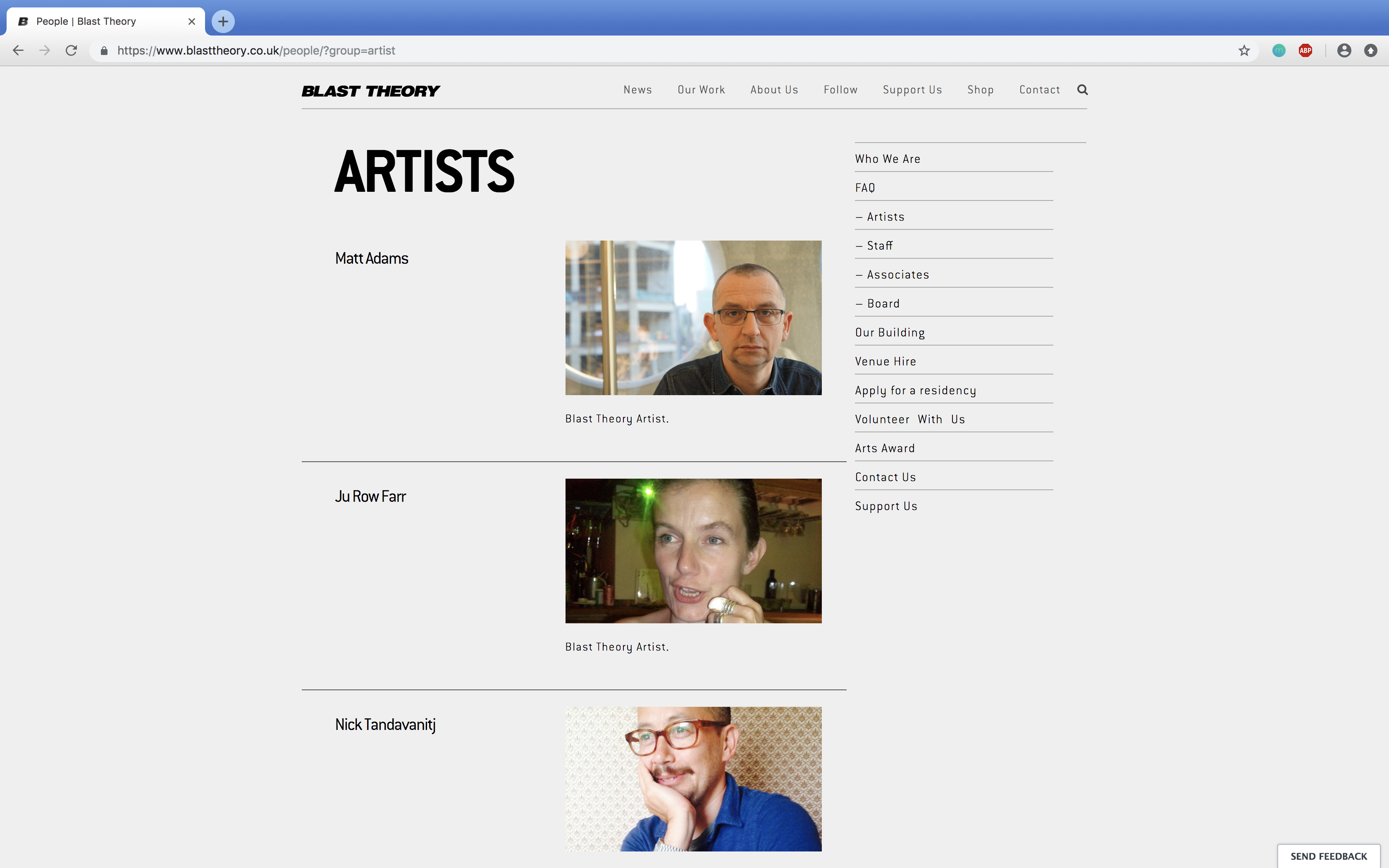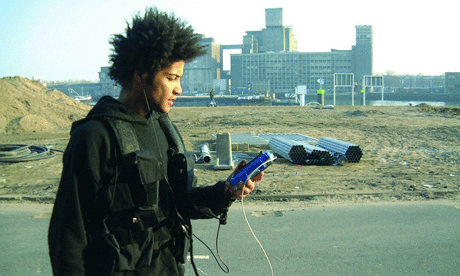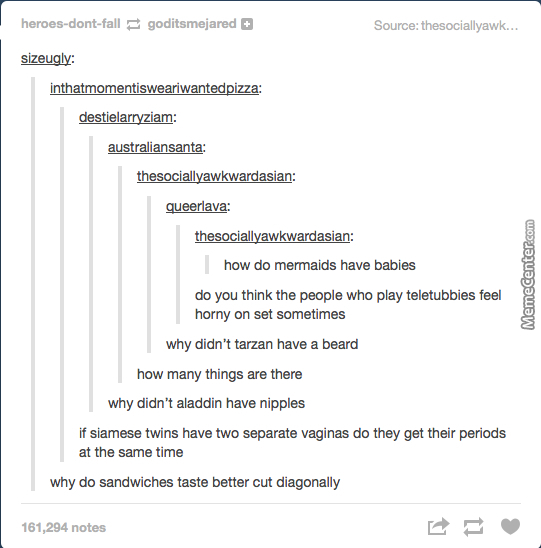The history of art begins with the history of humanity- cave paintings. And since then, art has gradually evolves as humanity moves forward. Art is a product of human thought and the resources they have around them, that is why art largely reflected the innovational standings of societies. From bronze tools during the times before settlement to the marble busts after civilizations started to emerge to traditional paints and sketches to now. Now, as technology emerges alongside the development of the online web, streaming, and cloud; art has taken an adventitious turn into the digital and virtual. Humans have now engineered technology and the internet to serve as our media for the arts. From Ivan Sutherland, “Sketchpad” in 1962 to Lynn Hershman’s “Deep Contact” in 1983. Both utilize technology to create an art piece that is both engaging and interactive. In this digitalized game of “Tag” and “Hide-and-Go-Seek”, “I’d Hide You” by Blast Theory, blends both technology with human interaction But who and what is Blast Theory exactly? What is it that they do? Blast Theory is a community of pioneering artists who create interactive art pieces to explore social and political questions. This group was created in 1991 by Matt Adams, Niki Jewett, Will Kittow and Ju Row Farr. The works by this group utilize a multitude of different media; such as performance, installation, video, and online technology. But what makes Blast Theory avant-garde is the way they meld scientific technology with collaborative art. Blast Theory also allows the audience members to play a vital role in the production and outcome of the artwork. This engagement transforms the role of the artist to a viewer and the audience to the artist. In the end, the exploration of social and political questions becomes a more personal and thought-provoking experience for the participants. Some of Blast Theories other well-known works include- “Can You See Me Now?”, “Uncle Roy All Around You”, “Kidnap”, “Gunman Kill Three”, and “Karen.”
But who and what is Blast Theory exactly? What is it that they do? Blast Theory is a community of pioneering artists who create interactive art pieces to explore social and political questions. This group was created in 1991 by Matt Adams, Niki Jewett, Will Kittow and Ju Row Farr. The works by this group utilize a multitude of different media; such as performance, installation, video, and online technology. But what makes Blast Theory avant-garde is the way they meld scientific technology with collaborative art. Blast Theory also allows the audience members to play a vital role in the production and outcome of the artwork. This engagement transforms the role of the artist to a viewer and the audience to the artist. In the end, the exploration of social and political questions becomes a more personal and thought-provoking experience for the participants. Some of Blast Theories other well-known works include- “Can You See Me Now?”, “Uncle Roy All Around You”, “Kidnap”, “Gunman Kill Three”, and “Karen.”
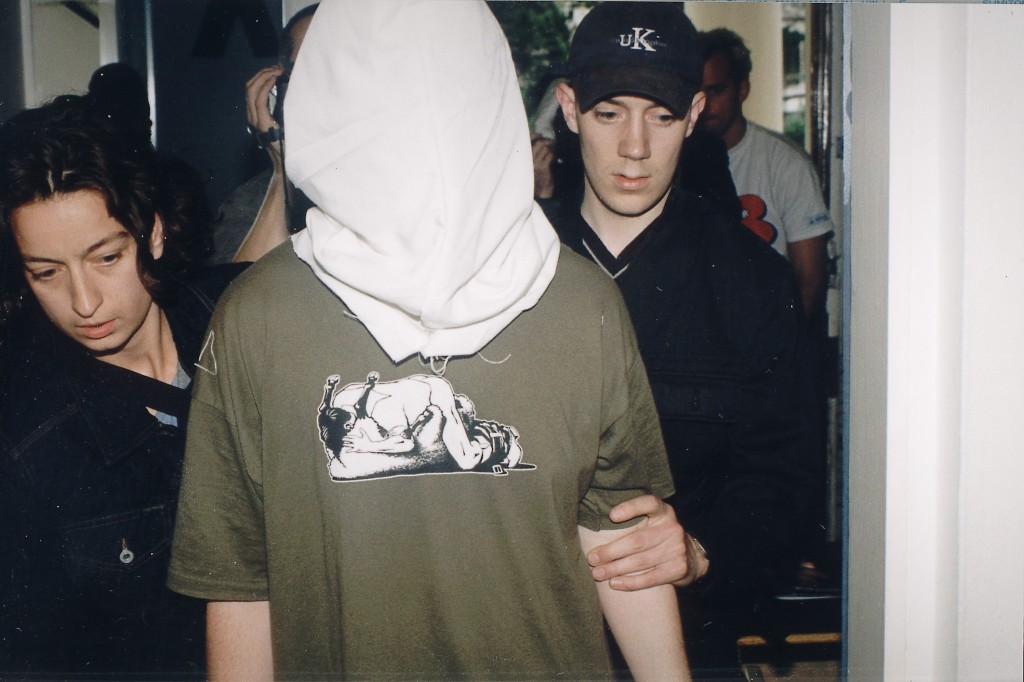
Picture from Blast Theory Website
“Gunman Kill Three” was one of their earliest works and was geared more towards live and performance art. This work and several other early works focused on the club culture to create multimedia performances. Even in their early works interactivity played a key role in the performance. “Kidnap” was one of Blast Theory’s more controversial and risky works due to the issues the piece tackled as well as the methods Blast Theory chose to communicate the message with. “Kidnap” is an interactive and immersive experience that gives the participants a genuine “kidnapping” experience (with their prior consent). Blast Theory wanted to underscore the themes of violence, pornography, and politics. In “Can You See Me Now?” and “Uncle Roy All Around You” are two of their successful multimedia pieces that integrated locative media with mixed reality.
What drew me to Blast Theory was their ability to incorporate technology often associated as “anti-art” with social and political issues to create a stimulating and interactive art piece. This idea of mixing and recreating has always been an important value in my life and to see a group of artists express it so beautifully and simply resonated with me. Not only is Blast Theory feel a source of comfort but also serves as a source of inspiration. Blast Theory stimulates both the audience and themselves with their artworks. The artists within the group constantly try to challenge themselves with new technology, methods, and issues by pushing themselves to be more innovative and courageous.
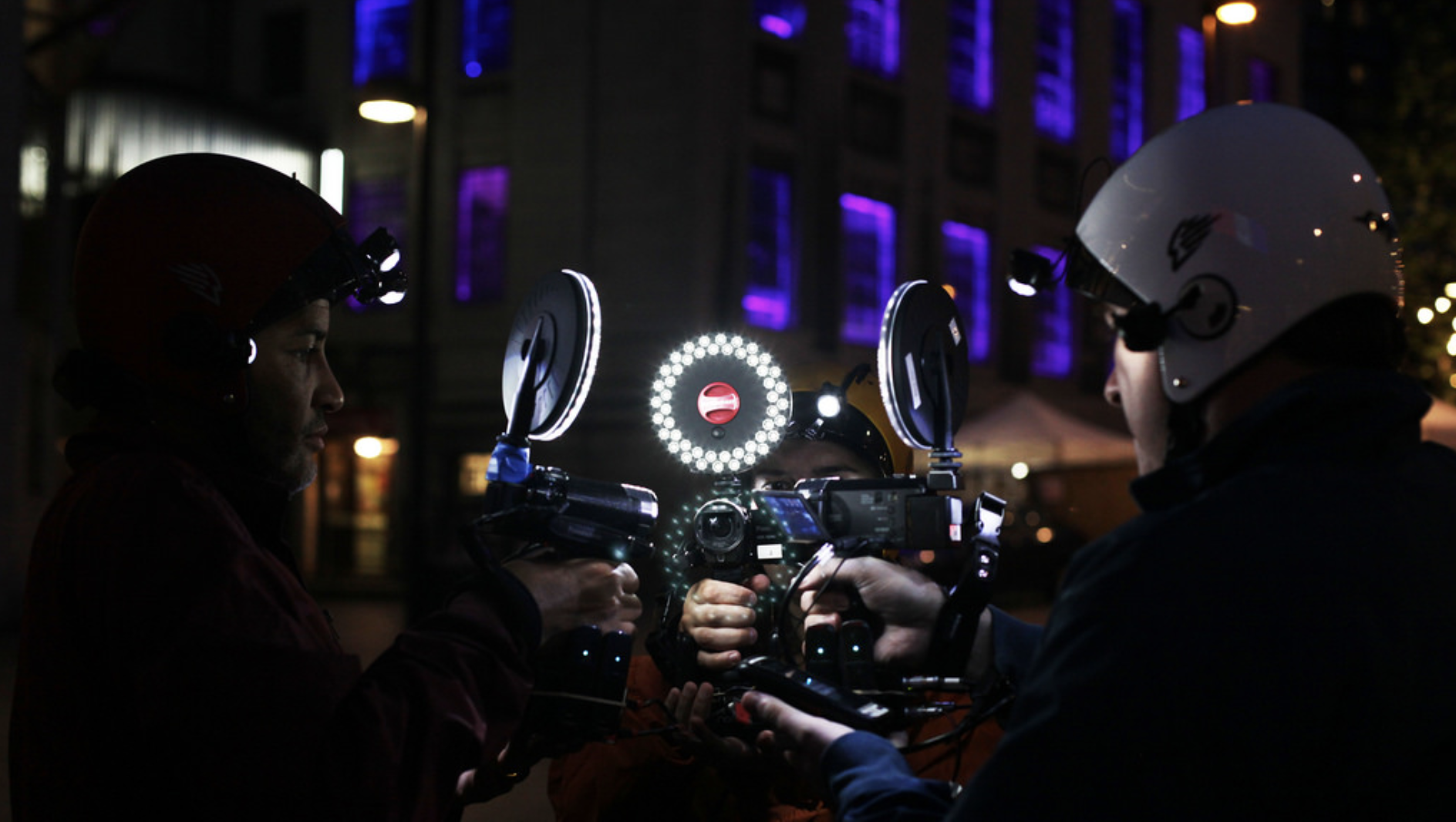
The basic premise of “I’d Hide You” is that people are equipped with live cameras and are divided into teams in which they play a game of tag around the entire city. The immersion lies in the second layer of the piece, in which these cameras send live footage to the internet; allowing anyone to watch the game as if they themselves were running. The interactivity can be experienced in the final layer of the artwork in which the viewer is now a part of the team. The viewer can help the participants find one another by updating online, the location of other runners using the runner’s GPS tracker. This interactivity is not only personal but also collaborative. The outcome of this project can be seen in the video below by Blast Theory who summarizes the entire event.
Unlike the other works by Blast Theory, “I’d Hide You” is not a politically or socially stimulating piece meant to impress eager enthusiasts. Instead, “I’d Hide You” is a simple game that interacts with, collaborates together, and immerses oneself in the experience. When creating this collaborative work, the artists took the most rudimentary form of interactive games, running. This simple idea of running and catching has been a form of human entertainment even before the onset of technology. For example, physical games like “tag” and animated cartoons such as “Tom and Jerry” revolve around the idea of a runner and a chaser. The entertainment comes from the adventure the runner and chaser experience during their journey as well as the ultimate conclusion that follows the long arduous journey. The participants of “I’d Hide You” get to experience this entire journey alongside the runners.
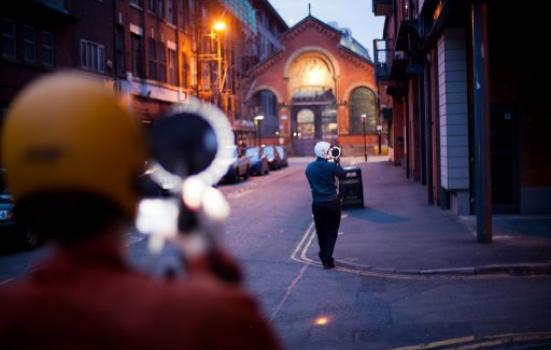
During our History of Design class, as mentioned by our Professor, New Media art contains three aspects that make it unique and stand apart from any other forms of art. Interactivity. Hypermedia. Immersion. Under interactivity, there is also collaboration, which I believe is also very important in the work that I chose by Blast Theory.”I’d Hide You”. There is aspects of Hypermedia in this work but is limited to the interface used by the team in order to communicate with the runners as well as the live streaming cameras used to document the chase.

The interactivity in “I’d Hide You” can be seen between the runners themselves as well as the audience and the runners. The interaction between the runners refers to the actual game of chase where each person is trying to hide from other runners while simultaneously catching them on camera. The interaction between the runners and audience is documented by the audience watching the live stream and helping the runners. Through this journey, the participants and the runners become collaborators who have created a whole new experience and outcome by dabbling with the different variabilities in the work.
Variability. One of the five Principles of New Media discussed by Lev Manovich. In “I’d Hide You”, variability, is the strongest principle as the integration of multiple human interactions have created a multitude of different end results. Not only is there a man to man interaction but also a man to machine interaction. And technology itself is interacting with the audience as the technology communicates with the “performers”. As the audience inserts themselves in this experience with the use of technology, they themselves have become “performers”.

This immersion into the experience happens both virtually online as well as physically offline. The physical immersion occurs amongst the runner as they are literally thrust into the outside world to compete. The environment is completely candid as none of the passerby or store owners were told were told of the game. The virtual part of this piece materializes onto the digital screen through the live streaming video. This video is made possible by the camera and LED ring light each runner is equipped with before the start of the game. The runners are also given GPS trackers to constantly locate and update their location online, as well as given a phone that updates them to Intel given by their team members. The runner is constantly holding up the camera for their team members to see, this makes the participants the runner’s new “eyes”. Eventually, the participant immerses himself or herself into the experience and becomes one with the runner. Not only does the participant get to see what the runner sees, but he or she also gets to see it in real time. This real-time immersion can be seen in older works such as Ivan Sutherland’s “Head-Mounted Display” and newer games like “Pokemon Go!”. Real-time immersion makes the experience seem legitimate and consuming.
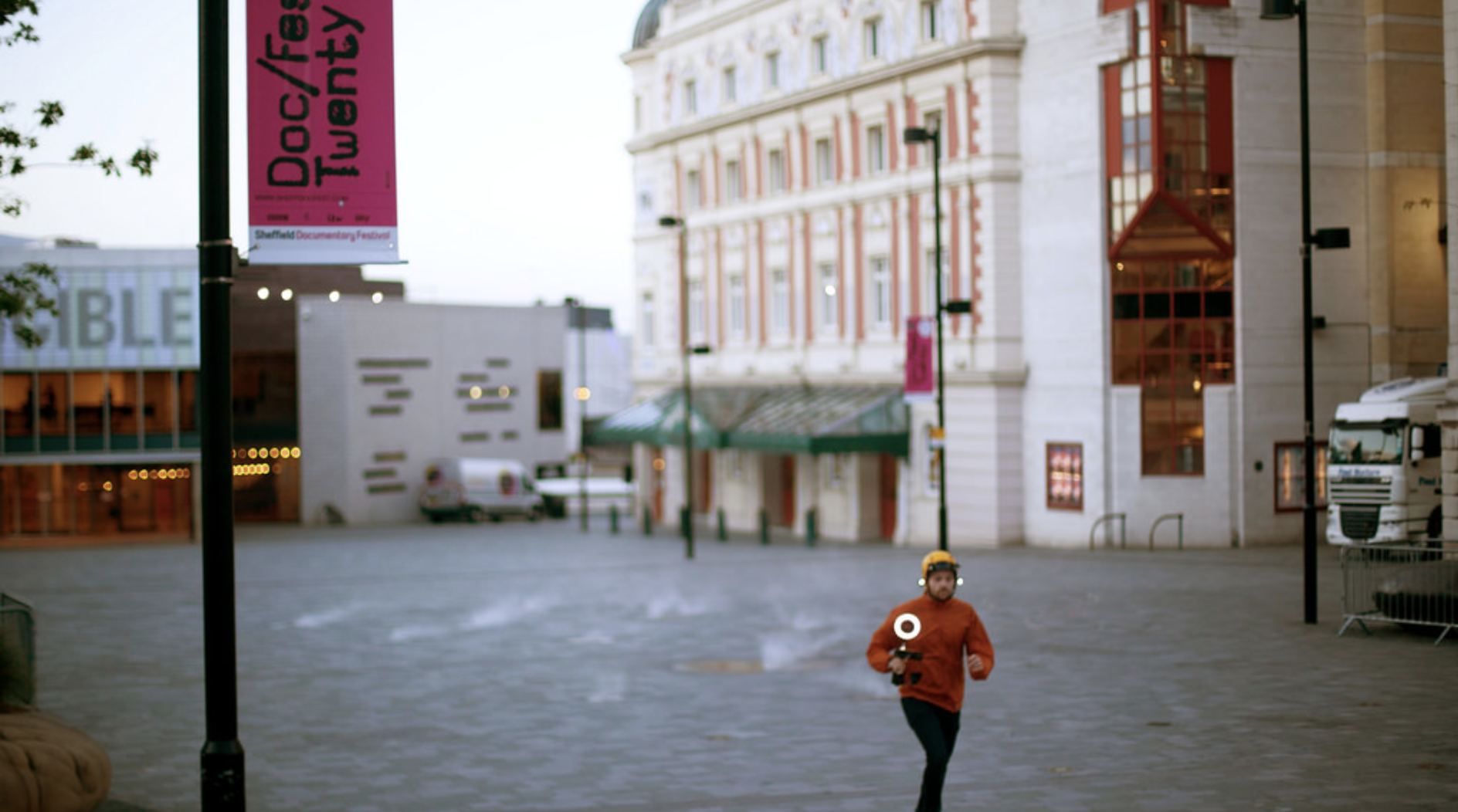
“I’d Hide You” is a simplistic and exhilarating game that brings together different people for a fun night together. Using modern technology, the artwork contains both a collaborative interactivity and immersive quality; which allows for a wide range of variability. These are the characteristics and principles that define New Media. Participants follow runners on a tour of the nightlife in the city while playing a rigorous yet digital game of Tag and Hide-and-Go-Seek.


